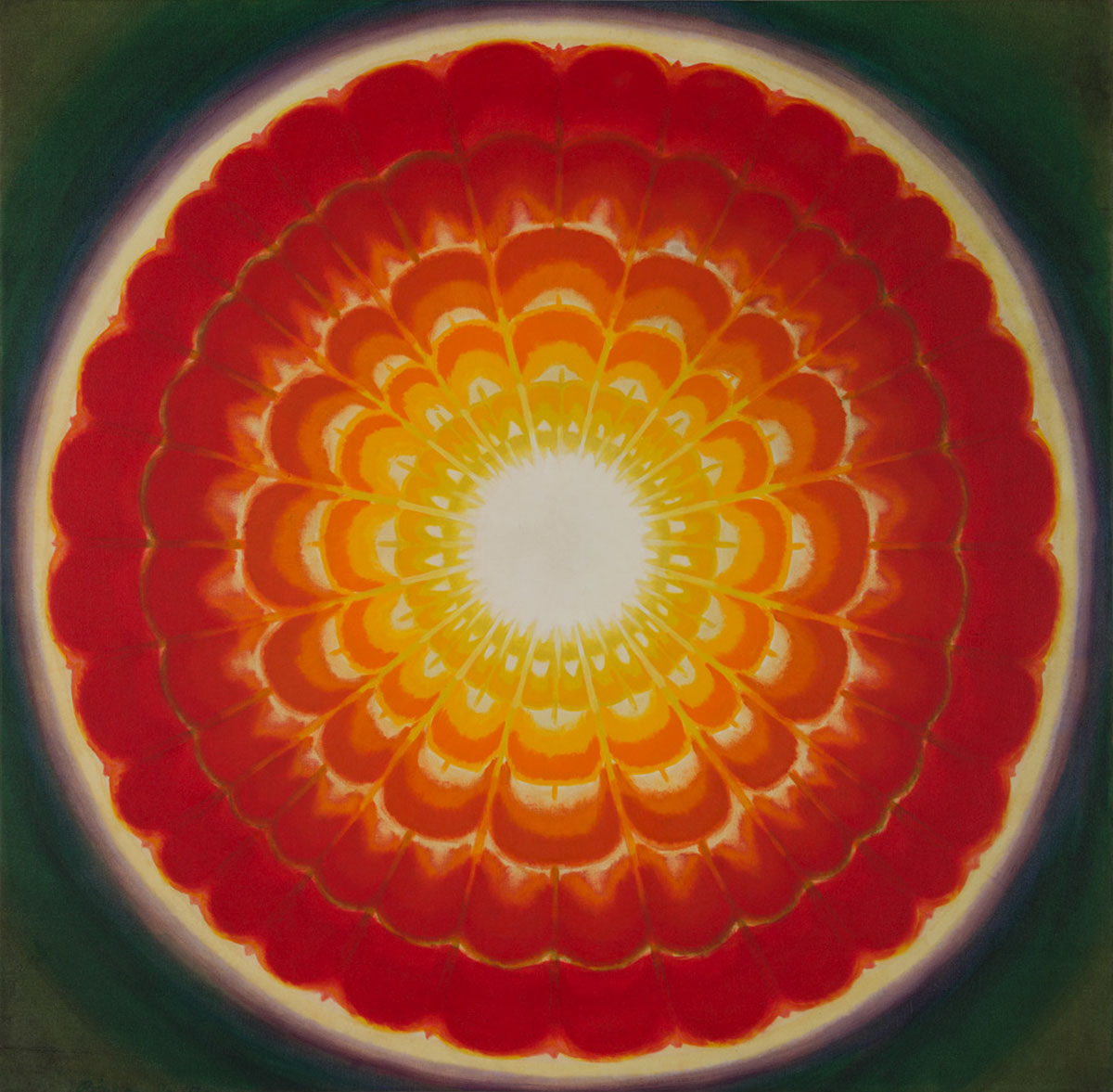ARTICLE
Biren De
A modernist artist known for his Neo-tantric works, Biren De incorporated Indian and Western art traditions, primarily Tantric symbolism, in his work. His early work was largely figurative, and he later transitioned to more abstract, geometrical representation.
Born in Faridpur (in present-day Bangladesh), De travelled to Calcutta (now Kolkata) in 1944 to study fine arts at the Government College of Arts and Crafts. In 1949, he travelled and exhibited his work throughout Europe, including at the Salon de Mai in Paris in 1951. He received a Fulbright Scholarship in 1959, which enabled him to live and work in New York for a year. De also taught at the College of Art, New Delhi, from 1952–63.
He began his artistic career as a portrait painter, focusing on figural depictions in the vein of the Post-Impressionists. However, by the time he left New York in 1960, he had transitioned from figurative to abstract painting, primarily the Neo-Tantric style, which focused on developing concepts from Tantric practices and texts. In De’s works, this was reflected in the use of geometric forms, including crescents and mandalas, and bright juxtapositions of light and colour to represent the notions of Shakti, or divine energy. He also extensively explored the balance of female and male energies in his work through phallic and yonic symbolism. Other recurring symbols in his work include the wheel, the sun, the lotus and seeds. He also frequently employed bright colours, such as deep blues and reds, as well as a central, luminous bindu set against a dark background.
De received two national awards from the Lalit Kala Akademi — in 1958 for his painting Apparition (1957) and in 1964 for Dying Ogre (1964). He was also awarded the Padma Shri in 1992. De’s works have been exhibited internationally, including at the Sao Paulo Biennale (1961); the Venice Biennale (1962); and Chemould Prescott Road, Mumbai (1973–74). His works are part of the permanent collections of the National Gallery of Modern Art, New Delhi; the Lalit Kala Akademi, New Delhi; the Museum of Modern Art, New York; and the National Gallery of Prague.
De died in New Delhi in 2011.
Bibliography
Our website is currently undergoing maintenance and re-design, due to which we have had to take down some of our bibliographies. While these will be re-published shortly, you can request references for specific articles by writing to hellomapacademy@map-india.org.








